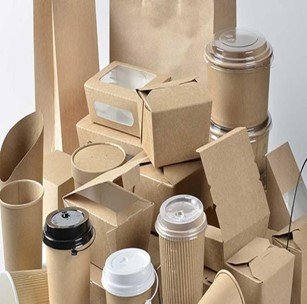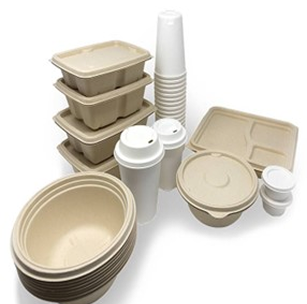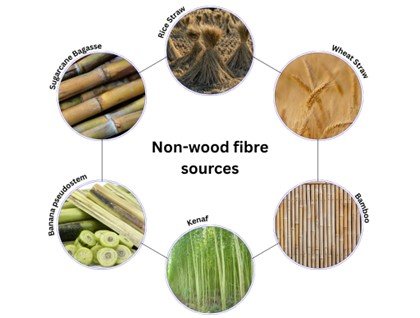Paper Packaging Leads the Sustainability Race and Non-Wood Fibre Joins the Charge
A global sustainability survey has confirmed what eco-conscious consumers have been saying for years: paper and fibre-based packaging are winning hearts and markets for being recyclable, compostable, and made from renewable materials.
But as the world turns away from plastics, a new class of materials is stepping up: pulp molded packaging from non-wood fibres such as bagasse, bamboo, banana pseudostem, wheat straw, and rice husk.
These agro-waste fibres not only share paper’s strengths renewability and biodegradability but go a step further by turning farm waste into value.


The Data Driving the Shift
Recent findings shared by the Paper Manufacturers Association of South Africa (PAMSA) show that:
- 75% of consumers consider paper and cardboard the best for biodegradable or compostable packaging.
- 64% prefer online orders delivered in paper packaging up from 58% last year.
- 58% say they’re using more paper packaging than before.
The message is clear: people want packaging that fits a circular economy, not a landfill.
From Forests to Fields: The Rise of Non-Wood Fibres
Traditionally, paper and packaging come from wood pulp but non-wood fibres are rapidly gaining attention. These include:
- Bagasse (sugarcane residue).
- Banana pseudostem.
- Wheat straw & rice husk.
- Bamboo & kenaf etc.

Non-wood offer several advantages:
✅ Renewable, fast-growing, and locally available in many tropical regions
✅ Reduces pressure on forests and virgin wood resources
✅ Lower carbon footprint and water usage
✅ Excellent for molded packaging applications (plates, trays, clamshells, takeaway boxes)
Pulp molding technology transforms these fibres into rigid, durable, and biodegradable packaging ideal for replacing plastic or foam food containers.
Pulp Molding Technology - A Perfect Fit
Pulp molding involves:
- Fiber pulping: turning non-wood to fibers slurry.
- Molding: shaping it into packaging forms using heat and vacuum.
- Drying and finishing: hardening the products into functional, smooth-surfaced, compostable packaging.
These products align perfectly with the consumer and regulatory demand for eco-friendly, plastic-free packaging solutions.

Why It Matters
As Africa and other emerging regions ramp up packaging production, non-wood pulp molding can bridge sustainability with local agriculture reducing waste, creating jobs, and lowering imports of wood pulp or plastic resin.
By integrating pulp molded products from agro-waste into the mainstream packaging mix, manufacturers can meet the market’s sustainability expectations while building resilient, circular local economies.
Conclusion
As consumers demand packaging that matches their environmental values, pulp molded packaging from non-wood fibres stands out as the next frontier in sustainability.
By combining renewable agriculture with innovative design, Africa can lead the world in eco-packaging that’s both planet-friendly and economically smart.




